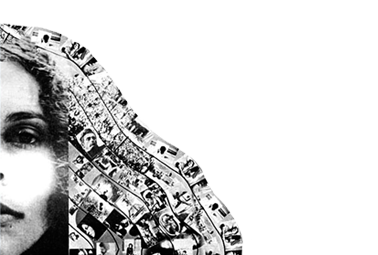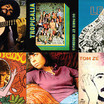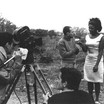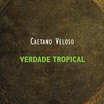Ruídos pulsativos

Marginália
In October, 1971, in his “Geléia Geral” (“General Jam”) column in the Rio tabloid newspaper Última Hora, Torquato Neto wrote, “At this moment there is absolutely nothing better in our super-praised Brazilian Popular Music (MPB). Nothing better than Gal.” The columnist was referring to Gal Costa’s concert FA-TAL. In a short season at Rio’s Siqueira Campos theatre, Gal’s show, directed by Waly Salomão, was one of the huge successes of the time (1971-72). Shortly afterwards came the LP Gal a todo vapor (Gal Full Steam), the cover designed by Luciano Figueiredo and Oscar Ramos. Her repertoire brought together compositions by highly respected and established songwriters such as Roberto and Erasmo Carlos, Caetano Veloso, Jorge Ben, Ismael Silva and Geraldo Pereira, as well as the newcomers Jards Macalé, Luiz Melodia, Moraes and Galvão, Carlos Pinto, Duda Machado and Waly Salomão himself. Recorded live, it provides an excellent musical panorama of the period. Of the record’s motley cast of distinguished and bohemian songwriters, some, like Luiz Melodia, were to become great names in MPB, while others, such as Carlos Pinto, sunk into oblivion.
It is in the records of Gal Costa between 1969 and 1972 that one can find the principal focus of innovation and experimentation of post-Tropicalist MPB. After Caetano Veloso and Gilberto Gil had been imprisoned and exiled, Tropicalism lost its force and dynamism as an organized musical movement. With the two leaders on their involuntary visit to London, Gal Costa and José Carlos Capinan were the ones who best carried on the quest for new musical directions and partnerships, (in MPB, the latter took on a specific meaning – not a permanent partnership but a deep exchange and merging of creativity for that particular show, track or record). In 1970, together with Jards Macalé, they had set up the Tropicarte company. That same year, Gal Costa and her partners released the album Legal (slang that had journeyed from its original meaning of ‘legal’, to mean, ‘ok’, or ‘cool’) with cover design by Hélio Oiticica.
On the 1971 FA-TAL album, director Waly Salomão included songs of some new artists who were just coming to public attention. Os Novos Baianos (The New Bahians), represented by their song-writers Moraes Moreira and Galvão, were one of the most prominent groups of the time, recording such memorable and popular tracks as 1972’s Acabou Chorare (The Crying’s Over). They lived together in a farmhouse commune in Jacarepagua (just outside Rio) and established a relationship between their music and the Brazilian ideals of counterculture lifestyle. Another very successful songwriter who made his debut on FA-TAL was Luiz Melodia. A frequent visitor to the hillside favela of São Carlos in Rio’s Estácio de Sá district, Waly Salomão met the songwriter and chose “Pérola Negra” (“Black Pearl”) for Gal to sing in her show. Soon afterwards, Melodia was signed up by the Philips record company, recording classic albums and still active today.
Waly Salomão and Jards Macalé were two key names on the musical scene of the period, not just for the part they played in Gal Costa’s work, but, above all, for their songwriting partnerships. Macalé, following up on his 1971 album which had songs co-written with Waly himself, as well as Capinan, Torquato Neto, Luiz Melodia and Duda Machado, released a new LP, Aprender a nadar (Learning to Swim). It was on this album that Macalé and Salomão came up with the term “esthetic of romantic morbeza” (‘morbeza’ was an invented word, a mixture of ‘morbidity’ and ‘beauty’). Dedicated to Hélio Oiticica and Lygia Clark, the album set their own songs side-by-side with those of an earlier period by Lupicínio Rodrigues (1914-1974) and Orestes Barbosa (1893-1966), as well as by Rogério Duarte (b.1939). And Jards Macalé, who worked with Gal Costa on her two LPs, also played a key part in one of the best records of the epoch, Transa (A deal, or a sexual encounter) recorded by Caetano Veloso in London and released in 1972.
Two other musicians whose innovative and provocative work needs to mentioned in connection with this period are Sérgio Sampaio, a musician from Espirito Santo state who wrote a number of very successful tracks and recorded some beautiful albums, and Jorge Mautner, a writer and philosopher as well as a recording artist. During the 70s, these two were archetypes of the ‘maldito’ (‘damned’), the term applied to Brazilian musicians linked to countercultural experimentalism and the universe of ‘marginália’.






















